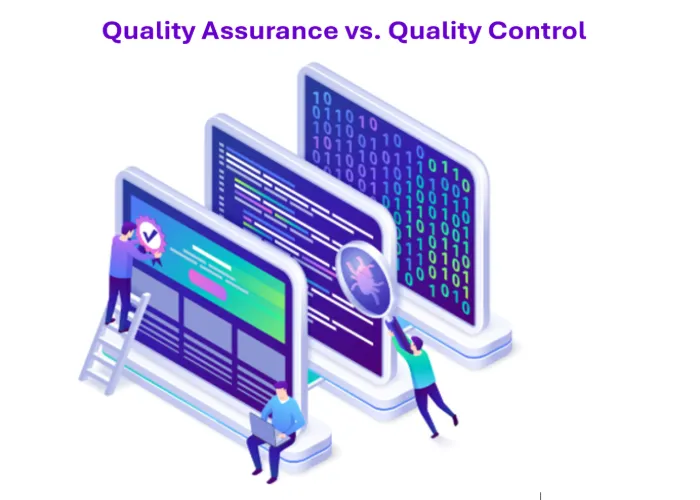12 Fail Proof Tips To Create Effective Test Plans

Introduction
Software testing is an indispensable part of the software development lifecycle. This ensures that the final product meets quality standards, functions as intended, and satisfies user expectations. At the heart of every successful testing endeavor lies a meticulously crafted test plan. A well-designed test plan not only outlines the testing approach but also serves as a roadmap for the entire testing process. In this blog, we will delve into fail-proof tips for creating effective test plans that can elevate your software testing projects to new heights of success.
Follow These Tips to Develop a Comprehensive Test Plan
Tip 1: Understand the Project Scope:
Before diving into test planning, it’s crucial to have a comprehensive understanding of the project scope. This involves understanding the purpose of the software being developed and determining what needs to be tested and the types of testing required. This includes understanding the objectives, functionalities, requirements, and constraints of the software. Collaborate closely with stakeholders, developers, and other relevant parties to gather essential project information. A clear understanding of the project scope forms the foundation upon which the test plan is built.
Tip 2: Define Clear Objectives and Scope
Every test plan should have well-defined testing objectives that align with the project goals. Determine what aspects of the software need to be tested, including functional testing, accessibility testing, regression testing, performance, security, usability, compatibility, and user acceptance testing. Prioritize testing objectives based on their criticality and relevance to the project. Clear and concise testing objectives provide a roadmap for testers and ensure that testing efforts are focused and effective. By clearly defining the objectives, you can ensure that the testing process is focused and efficient. Additionally, defining the scope helps in identifying the specific functionalities and features that need to be tested, allowing you to allocate resources accordingly.
Tip 3: Identify Test Deliverables
Outline the deliverables that will be produced as part of the testing process. This includes test cases, test scripts, test data, test reports, and any other documentation relevant to the testing effort. Define the format, structure, and level of detail for each deliverable to ensure consistency and clarity across the testing team. Establishing clear expectations regarding test deliverables helps streamline the testing process and facilitates effective communication within the team.
Tip 4: Identify Test Requirements
Once the objectives and scope are defined, the next step is to identify the test requirements. Test requirements are the specific conditions or functionalities that need to be tested. This includes both functional and non-functional requirements. Functional requirements include the expected behavior of the software, while non-functional requirements focus on aspects like performance, security, and usability. By identifying these requirements, you can ensure that all aspects of the software are thoroughly tested.
Tip 5: Select Appropriate Testing Techniques
Choose the testing techniques and methodologies that best suit the project requirements and objectives. This may include black-box testing, white-box testing, regression testing, integration testing, and user acceptance testing, among others. Consider factors such as the software architecture, complexity, and risk profile when selecting testing techniques. A judicious combination of testing techniques ensures thorough test coverage and helps uncover defects across different layers of the software.
Tip 6: Create a Test Schedule
A well-structured test schedule is essential for effective test planning. It helps in allocating resources, setting timelines, and ensuring that the testing process is organized and systematic. The test schedule should include the start and end dates of each testing phase, the resources required, and the milestones to be achieved. By creating a comprehensive test schedule, you can track the progress of the testing process and make necessary adjustments if required.
Tip 7: Establish Test Execution Strategy
Define the approach for executing tests, including test scheduling, prioritization, and sequencing. Determine the order in which tests will be executed based on dependencies, risk factors, and business priorities. Allocate sufficient time and resources for each phase of testing, including setup, execution, and analysis. Implement a risk-based testing approach to prioritize tests that have the highest impact on the project’s success. A well-defined test execution strategy ensures systematic and comprehensive coverage of the testing scope.
Tip 8: Determine Test Environment and Tools
Identify the test environment(s) in which the software will be tested, including hardware, software, network configurations, and third-party dependencies. Ensure that the test environment accurately reflects the production environment to mimic real-world conditions as closely as possible. Additionally, select appropriate testing tools and frameworks to support the testing effort, such as test management tools, automation frameworks, and performance testing tools. Integrating the right tools into the test plan enhances efficiency, scalability, and repeatability of the testing process.
Tip 9: Plan for Test Data Management
Develop a strategy for managing test data effectively throughout the testing lifecycle. Identify the types of test data required for different test scenarios, including valid, invalid, boundary, and edge cases. Ensure that test data is representative of real-world usage patterns and scenarios to uncover potential issues early in the testing process. Implement data masking and anonymization techniques to protect sensitive information during testing. Establish procedures for generating, maintaining, and refreshing test data to support iterative testing cycles.
Tip 10: Define Defect Management Process
Establish a clear process for reporting, tracking, and resolving defects identified during testing. Define the criteria for classifying and prioritizing defects based on severity, impact, and urgency. Implement a centralized defect tracking system to capture relevant information about each defect, including description, steps to reproduce, severity level, and status. Assign ownership and accountability for defect resolution to ensure timely remediation. Regularly communicate defect status and progress updates to stakeholders to maintain transparency and facilitate informed decision-making.
Tip 11: Allocate Resources and Responsibilities
Allocating resources and responsibilities is crucial for the success of the testing process. This involves identifying the team members who will be responsible for executing the tests, allocating the necessary hardware and software resources, and ensuring that the testing environment is set up correctly. By clearly defining the roles and responsibilities, you can ensure that the testing process is efficient and that everyone understands their tasks.
Tip 12: Incorporate Continuous Improvement Practices
Promote a culture of continuous improvement within the testing team by soliciting feedback, conducting retrospectives, and implementing lessons learned from previous testing cycles. Encourage collaboration and knowledge sharing among team members to leverage collective expertise and insights. Embrace automation, innovation, and best practices to streamline testing processes and enhance efficiency. Monitor key performance indicators (KPIs) such as test coverage, defect density, and test execution metrics to identify areas for improvement and optimization.
Conclusion
In conclusion, crafting effective test plans stands as a cornerstone for the triumph of any software development endeavor. By adhering to the fail-proof suggestions delineated in this blog post, you can forge test plans that are exhaustive, streamlined, and purpose-driven. It is imperative to delineate unequivocal objectives and scope, pinpoint test prerequisites, devise a meticulous test schedule, delineate test cases, and meticulously assign resources and responsibilities. Armed with a meticulously crafted test plan, you can embark upon the testing journey with confidence, assuredly delivering top-notch software solutions to your clientele.
Creating an effective test plan is pivotal for the triumph of software testing initiatives. The tips outlined in this blog can propel your test planning endeavors to unprecedented heights, fostering superior testing outcomes. It’s essential to tailor these guidelines to suit the unique needs and nuances of your projects. With a meticulously crafted test plan serving as your navigational beacon, you can confidently navigate the intricate terrain of software testing, delivering software products of impeccable quality that surpass user expectations.






🗨️ Reader Comments